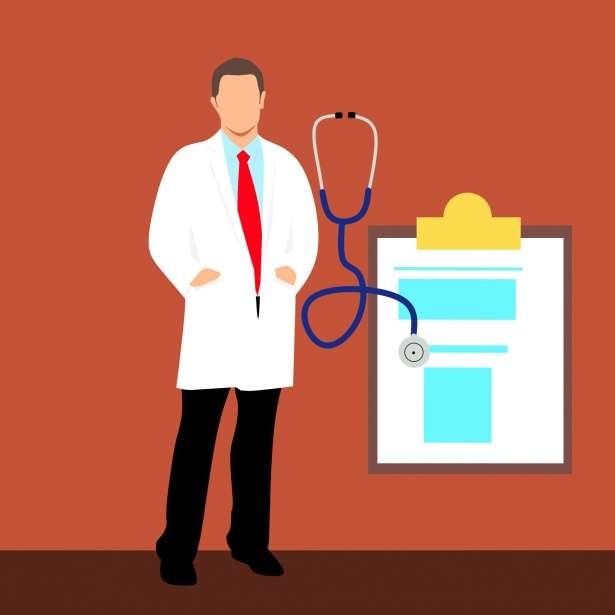K-State professor encourages focus on local priorities
MANHATTAN, Kan. — Americans’ interest in healthy lifestyles got a boost in late 2020 when the U.S. Department of Health and Human Services announced a lengthy list of community health objectives for the next decade.
Healthy People 2030 is the U.S. government’s push to identify public health priorities that help individuals, organizations and communities improve health and well-being, as well as tools to track progress. The effort is led by the agency’s Office of Disease Prevention and Health Promotion.
This is the fifth time that the government agency has come forward with decade-long health objectives for America’s communities. The list of recommendations includes 355 measurable objectives, including such leading health indicators as oral health, exposure to unhealthy air and food insecurity; and stretching to many social determinants of health, or how the conditions where people live, work and play affect their well-being.
“One of the first things communities need to do as they consider ways to improve the public’s health is to determine their purpose,” said Elaine Johannes, the Kansas Health Foundation Distinguished Professor of Community Health at Kansas State University. “Leaders of community health initiatives need to answer the question, ‘Why am I interested in the health of my neighbors, my church, my 4-H club, my school and my community? What is our purpose?’”
Johannes likened community health to a “big trip” that requires a map, or plan for getting to the end destination. Heathy People 2030 is a useful health map for communities, she said.
“What is our focus for this big trip; what are we going to focus on?” she asked. “Knowing your purpose is important, because if it’s personal health, then you might work on reducing high blood pressure, finding calm or dealing with chronic diseases. If the focus is on families, neighborhoods or whole towns, then working on conditions for health could include making safe and affordable housing more available, ensuring access to healthy food, planning transportation routes to get to health services and other strategies.”
Johannes said the 355 goals and objectives in Healthy People 2030 help to move communities in a direction to accomplish a common purpose. She notes that local officials could use the Healthy People 2030 recommendations for guidance in identifying priorities for the citizens they serve.
“We can use the Healthy People 2030 goals and data to focus community awareness on certain health issues,” she said.
One potential area of focus for Kansas could be the availability of health care in rural regions of the state. Johannes said Kansas publishes an annual report of under-served areas for health care professionals; the 2019 report indicates that many of the state’s communities are under-served in such areas as dental and primary care and mental health.
“One of the lessons learned from COVID-19 is that we really like to be around people,” Johannes said. “We like to be in community. When we aren’t, we do feel some level of despair, some level of isolation. We are seeing an uptick in depression, anxiety and persistent stress across states that have rural, frontier areas. Some national reports that came out last month show how COVID-19 is amplifying some of those despairs.”
“In response to the pandemic, extension and other national systems are thinking about what it means to thrive, and what it means to really be well,” she said. “Some of that well-being includes humane housing, reliable transportation and healthy, safe and meaningful employment.”
“We are all very aware that we learned a lot the past year about health, health care and public health. This year we’re getting ready to get on-board, set a common direction and face challenges together.”
More information about Healthy People 2030 is available online.
Also, Johannes encouraged those interested in community health to participate in the free online workshop, Community-Led Initiatives for Population Health Improvement, which will be held Jan. 28-29 and is sponsored by the National Academies of Sciences, Engineering and Medicine.
FOR PRINT PUBLICATIONS: Links used in this story
Healthy People 2030, https://health.gov/healthypeople
Kansas Department of Health and Environment, 2019 Health Professional Underserved Areas Report: Kansas Primary Care and Rural Heath: https://www.kdheks.gov/olrh/download/2019_Underserved_Areas_Report.pdf
Kansas Health Foundation, https://kansashealth.org
K-State Research and Extension local offices, https://www.ksre.k-state.edu/about/stateandareamaps.html
Community-led Initiatives for Population Health Improvement, https://www.nationalacademies.org/event/01-28-2021/community-led-initiatives-for-population-health-improvement-a-workshop
K State Research and Extension is a short name for the Kansas State University Agricultural Experiment Station and Cooperative Extension Service, a program designed to generate and distribute useful knowledge for the well being of Kansans. Supported by county, state, federal and private funds, the program has county extension offices, experiment fields, area extension offices and regional research centers statewide. Its headquarters is on the K State campus in Manhattan. For more information, visit www.ksre.ksu.edu. K-State Research and Extension is an equal opportunity provider and employer.
Story by:
Pat Melgares
785-532-1160
melgares@ksu.edu
For more information:
Elaine Johannes
785-532-7720
ejohanne@ksu.edu





